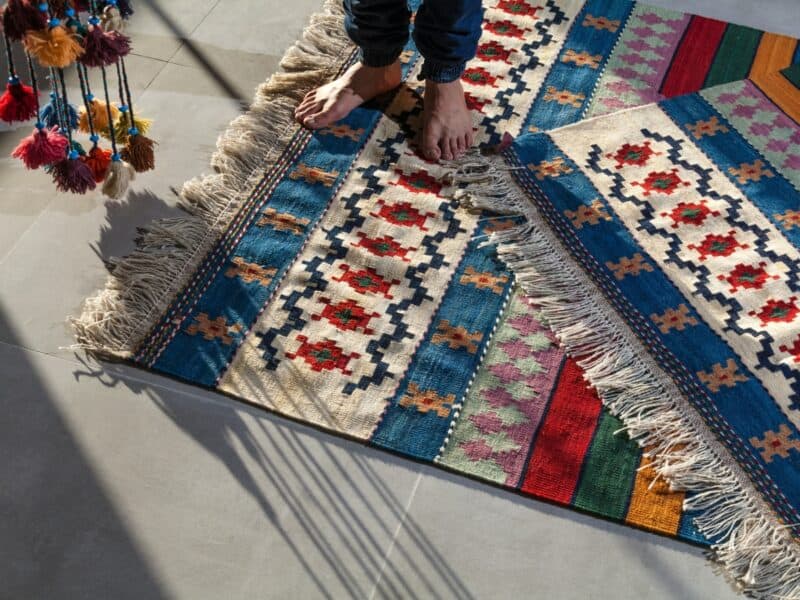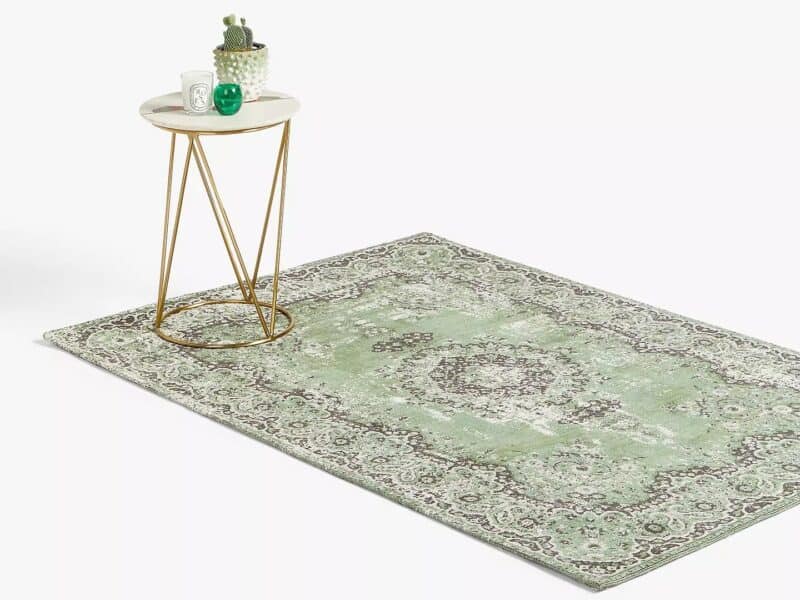
A rug is an extremely versatile piece of interior décor and floor covering. It serves many purposes from defining an area and establishing boundaries within a room to creating a bridge between two rooms; from helping to absorb noise, particularly on hardwood and Tile Floors, to protecting the same floors from scratches; from providing warmth in chilly rooms to adding texture and colour to a room, enabling an easy change of décor with the seasons.
For many, who love the look of hard flooring, rugs enable them to still enjoy the comfort and warmth of a soft insulating surface underfoot, as well as providing a safe and comfortable place for children to play.
So How do I Choose a Rug?
First decide on the functional needs for your rug. Is it for a home or a business environment? Are you using it to add warmth and comfort or colour and interest? Will it be required to cope with a lot of traffic and soiling?
Rugs for business use tend to be more formal as they reflect the professional atmosphere of the business setting; however, they can also be more bold and creative, depending on the characteristics of the industry.
In almost all cases, rugs for commercial premises will need to be durable as they will be coping with a great deal of daily traffic.
Rugs for the home, on the other hand, are generally a more personal, intimate item, reflecting the taste of the owner and meeting the needs of their lifestyle.
Thus it can either be a prized antique rug that is the highlight of the entrance hall or a thicker, more durable rug cushioning family activities in the living room.
Types of Rugs
Oriental rugs generally give a more formal appearance – these include Persian, Indian and Turkish rugs which are usually Hand-made Rugs and have finely detailed patterns and designs.
Other types of formal rugs are Aubusson, Savonnerie and Spanish carpets, as well as Art Deco rugs.
More informal rugs include those of modern design and also tribal and village-type rugs with simple, geometric design, whether from the African continent, the Middle East or Asia.
Remember that antique rugs, even in top condition, will usually have lower pile due to wear and therefore may not be the best choice if you’re looking for a thick, high, cushioning pile.
Rug Materials
Like carpets, rugs come in a range of materials. The most common fibre used is wool, usually from sheep although goat wool is occasionally used. Wool is naturally anti-static, with a high wear-ability and good natural resistance to dirt and staining. However, it can be difficult to clean if seriously soiled or stained.
The cost of a rug is dependent partly on the quality of the wool used, with a more lustrous wool that is high in lanolin preferred, as it is more durable than dry wool. Some rugs are also made of specialty wools, chosen for their finesse, softness and delicate texture – such as Angora and Pashmina wool.
Cotton can also be used to make rugs although often, it is only reserved for the foundation of the rug rather than its pile.
Cotton yarns are much stronger and less elastic than wool which means that it’s easier to maintain more even tension during weaving. It is often used for the pile when an extremely bright white colour is desired as cotton provides this better than wool.
Cotton rugs are affordable and easy to clean with a regular vacuum or even cycle in the washing machine.
Silk is an extremely expensive but premium material used in making rugs. It comes from the cocoons of silkworms and produces incredibly soft, beautiful and luxurious rugs.
Due to its luminous, reflective quality, dyes have a stronger effect producing colours that are more intense and brilliant – another reason for the high desirability of silk rugs.
However, silk rugs are extremely delicate, with much less durability than wool and as such are only really suitable as carefully-supervised items of decoration.
Other natural fibres include sisal and jute, both of which are more coarser-textured and durable and therefore ideal for high traffic areas. Note, however, that they are both sensitive to moisture.
Of course, many cheaper rugs are now made using synthetic fibres which mimic the look and feel of natural fibres but have greater durability and stain-resistance – these are more suitable to many busy family households.
Hand-Made or Machine-Made?
Naturally, hand-made rugs rank far above machine-manufactured due to the higher cost of manual labour, the greater time and effort involved and the usually higher quality.
However, most modern rugs are made using a machine loom process and like most mass-produced items, the mechanical production removes any idiosyncrasies found in the hand-made process which ironically lowers their value.
Having said that, machine-made rugs can be made of the same materials as hand-made rugs (wool, cotton, silk) and can also be of high quality, with certain types, such as Wiltons still demanding a high price.
Care of Rugs
Like carpets, rugs benefit from regular vacuuming and/or a good shake-out, as dirt and grime will quickly wear its colours and texture and reduce its beauty.
Make sure you give prompt attention to stains and spills and follow the same steps as you would for carpet (except some cotton rugs which may be washed in the washing machine – but check for colour-fastness and be careful of shrinkage at high temperatures).
In addition, it’s a good idea to reposition or rotate the rug every six months to help reduce wear and tear, and fading. If possible, keep rugs out of strong direct sunlight.
Lastly, prevent your rugs from slipping (and injury to people) by using anti-slip underlays beneath your rugs if you have hard surface floors.


